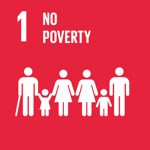Competitive areas of sustainable corn production in Central America
 Mexico
Mexico
 Costa Rica
Costa Rica
 Nicaragua
Nicaragua
 Panama
Panama
Executive Summary
This paper questions the assumption that corn production is not a potentially competitive activity in Central America for which the fundamental difference between white and yellow corn is recognized. As a background, the state of Central American agriculture was examined, after approximately 15 years of implementation of the modernization process and its expected contribution to rural poverty reduction and food security. A central objective of this work was to show that white corn production in Central America can be socially profitable and competitive in the domestic market and, potentially, at the level of the world market, if appropriate policy measures are taken.
Competitiveness is based on the efficiency of all elements of the value chain to offer consumers white maize products at the lowest possible prices. The project identified in the participating countries areas of maize production with high productive, competitive and sustainable potential, based on agro-climatic conditions and on the vital support of appropriate technologies and policies that promote agro-industry and added value in the production areas, the associativity of farmers, long-term investment in R&D of production technologies and the training of producers in different aspects of crop management and farm administration.
The technological solution
This was a strategic research project that was not oriented to the generation of technological solutions but rather to the systematization and analysis of information on the competitiveness of corn production in Central America. One of its methodological contributions was the application of the cluster approach that was used to analyze the competitive position of Central America in the world market for white corn. The analysis combined descriptive techniques with econometric techniques aimed at locating the current and future situation of corn production activity within a complex and dynamic context. On the technological side, the project examined the sector of research and development of new technologies in general and improved seeds in particular, which are particularly important for promoting productivity with lower unit production costs.
Results
The study showed that Nicaragua had more opportunities to develop competitive corn production than Costa Rica and Panama. The advantage was based on lower unit production costs although low productivity was common in all countries. Hence the need for greater public investment in research and development, as pointed out by the study. The cost structure in the three countries showed the need for a comprehensive support strategy based on a policy change with respect to basic grains in general and maize in particular. The simulation of the cost structure showed that with the prevailing level of technology and productivity, the countries required that the marginal income at the farm level be greater than the total variable costs in order for the activity to be competitive, a condition that was not always met. It also showed that after approximately 20 years of reforms aimed at modernizing agriculture, the policies implemented, although they promoted the emergence of a modern sector that exports non-traditional products, did not contribute to reducing rural poverty and the degradation of natural resources.
Beneficiaries
The direct beneficiaries of the project were the decision makers of the countries involved in the project, who had access to information on the conditions of competitiveness of maize production and the enabling factors. The indirect beneficiaries were the farmers and all the actors in the product value chain who received information on their needs. In addition, scientists and analysts are beneficiaries of a useful analytical model.
Sustainable Development Goals


Participating Organizations
Executor
- Centro Internacional de Mejoramiento de Maíz y Trio (CIMMYT) - México
Co-executor
- Instituto de Innovación Agropecuaria de Panamá (IDIAP) - Panamá
- Instituto Nicaragüense de Tecnología Agropecuaria (INTA) - Nicaragua
- MAG - Costa Rica




